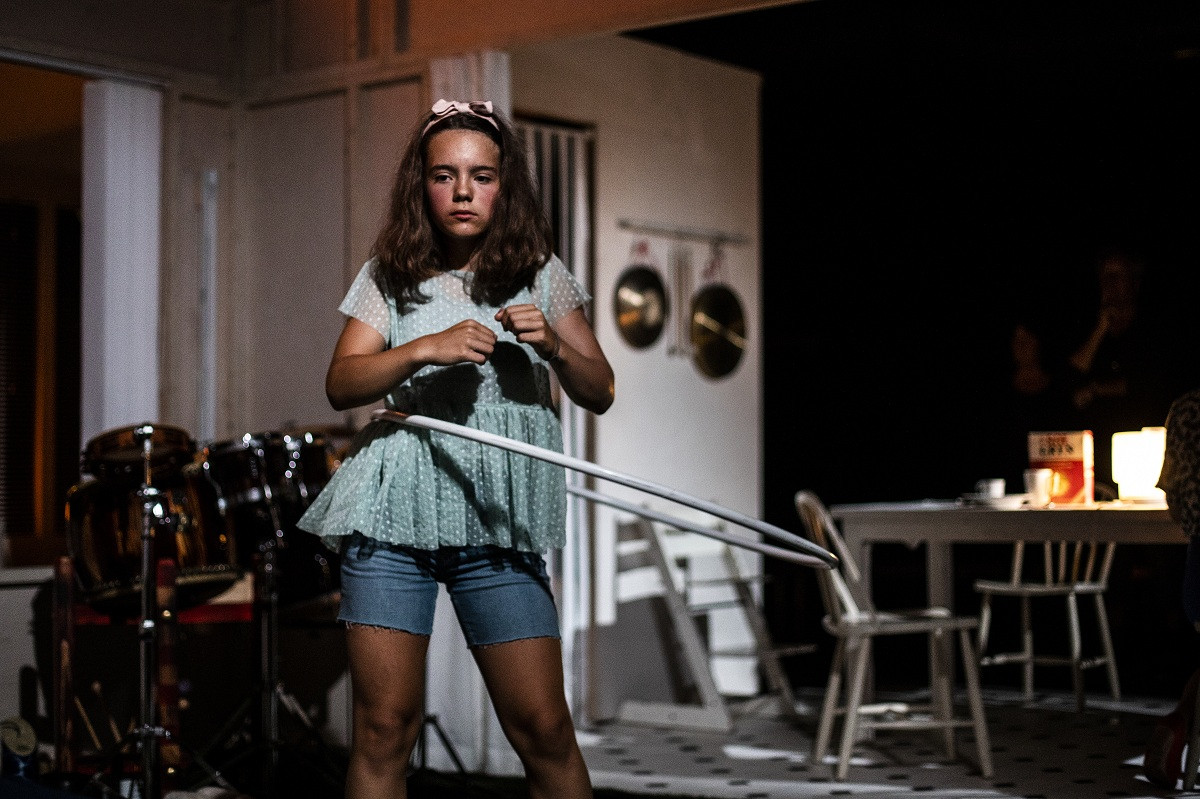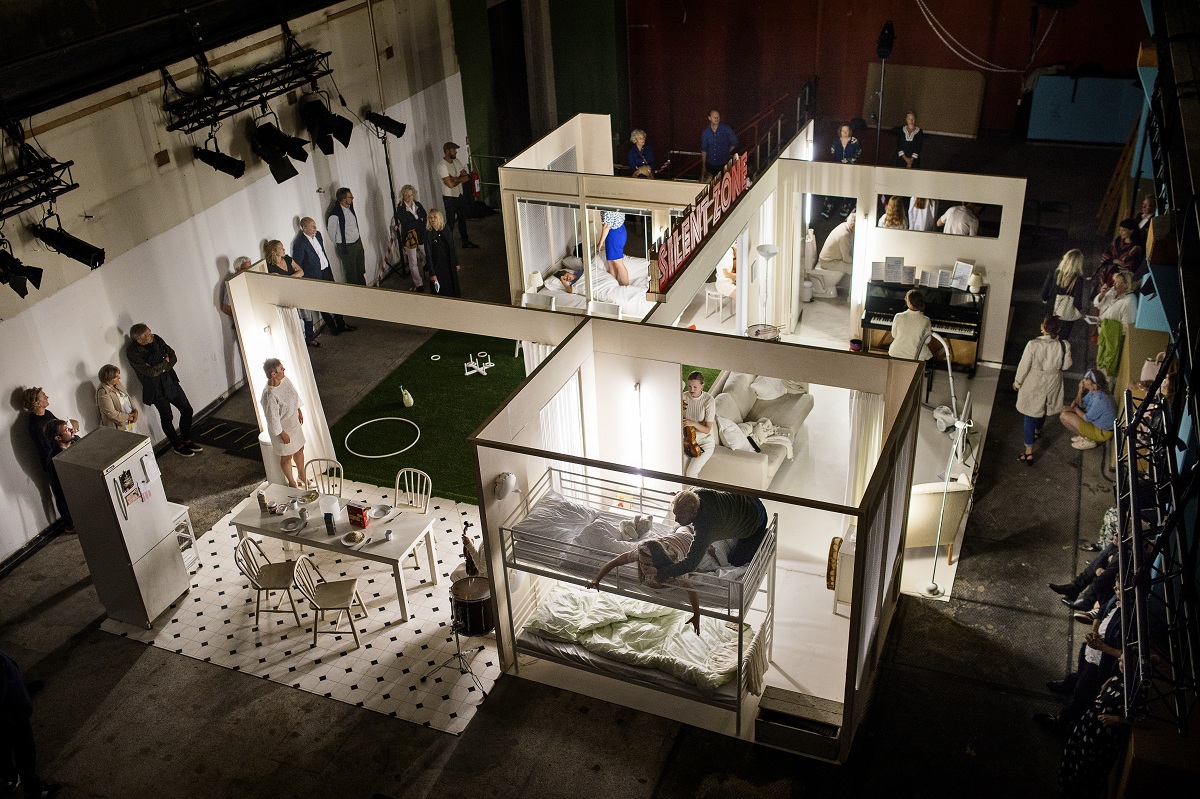
»An opera you need to see twice«
Good that Copenhagen Opera Festival revived Louise Alenius’s Silent Zone from 2017, because it’s an opera you need to see twice. Actually, you need to see it more than twice. Not to let its message marinate in your brain, but simply to get a handle on what’s going on in the first place and work out where you need to be standing in order to see and hear it properly.
The revival also gave us the chance to ‘get over’ the effectiveness of that scenography – six rooms of a suburban house around the edges of which the audience freely ambles and inside which everything from the furniture to the inhabitants are muted by an institutional off-white – and focus on what was actually being acted and, more importantly, played and sung across the opera’s series of pained monologues. I think I’ve almost got it now: the father is the pivot in a generational cycle of sexual and mental abuse and his ultimate death offers partial closure. Right? Maybe not.
A lucid score
In 2017 it was easy to miss how lucid Alenius’s score is. It uses a handful of ostinato or arpeggiaic patterns as anchors. Sometimes it frustrates with its own limitations and at others it provides intense dramatic focus – again, it can depend, literally, on your vantage point. There is judicious use of the ‘silence’ of the title but there could be even more. Some of the simplest details are the most telling, such as the lone violin that launches into a focused cadenza only to crash and burn. The best, in true operatic tradition, is saved for last: the lyrical epilogue for the whole musical ensemble, a cyclic lament sung and played while the boy repeatedly vomits his breakfast onto the kitchen floor.
Moments like that – more than the actual instances of inter-familial abuse, as the father rapes his own son or the son creeps into his own sister’s bed – are the most chilling in Silent Zone: the reaction rather than the action. The work’s most significant achievement is its creation of a hermetically sealed realm, in which we in the audience feel trapped along with the characters, where time is dragged to a snail’s pace by the horror of emotional dysfunction. Early on, two characters pour oats and milk into bowls in the kitchen and a theatrical trick means the two substances flow from their packets for minutes on end. It is respite and torture both at once.
There is something of Debussy’s Pelléas et Mélisande in the vagueness of the characters and their genealogy, which makes that difficulty with the narrative to some degree forgivable. But Silent Zone can also err towards the glib, as when a line of children appear from nowhere and sweep the house – a musical and physical cantus firmus. We get it, children are the victims; but isn’t the point that they’ll become the perpetrators soon enough anyway?
The work’s most significant achievement is its creation of a hermetically sealed realm, in which we in the audience feel trapped along with the characters, where time is dragged to a snail’s pace by the horror of emotional dysfunction
Nordisk Film, studio 3, Valby. Director: Tue Biering. Scenographer: Ida Grarup Nielsen. Singers (and non-singers): Gitta-Maria Sjöberg, Sten Byriel, Morten Grove Frandsen, Ying-Hsueh Chen.

